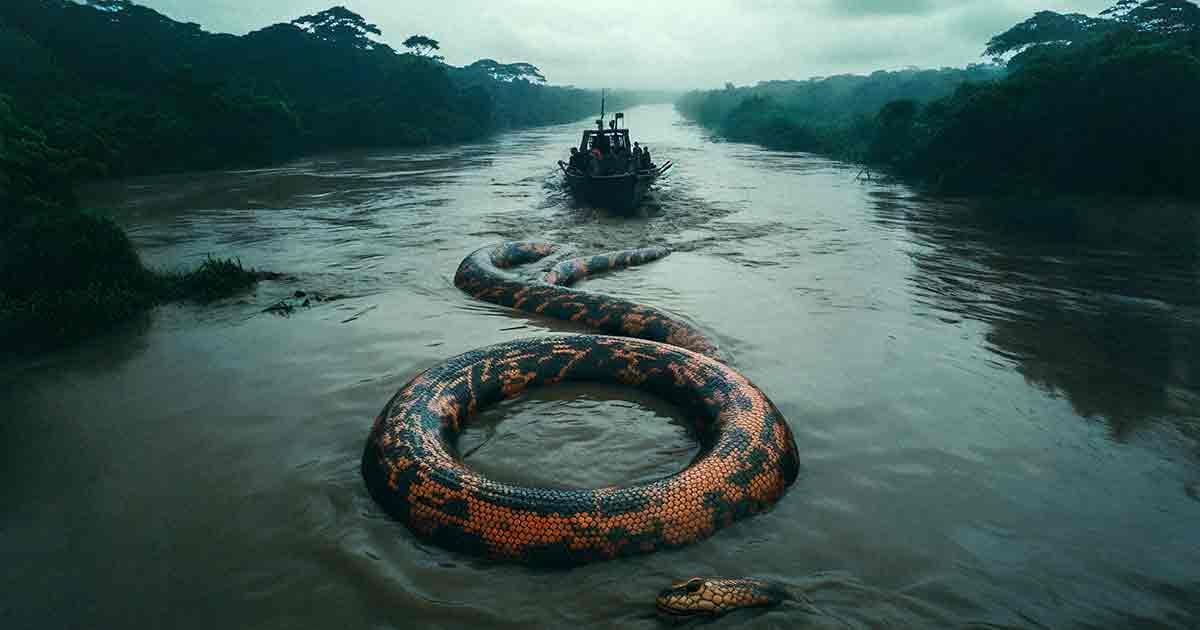
when Horror Yearbook – Yacumama is one of the most enduring and mysterious legends of the Amazon rainforest. Rooted in the traditions of the Indigenous Quechua people, this myth tells of a massive serpent that inhabits the mouth of the Amazon River and its many branches. Yacumama means Water Mother and she is believed to be a powerful force of nature, capable of both creation and destruction. Measuring up to 100 feet long in some tales, she is said to lurk beneath the surface, swallowing anything that drifts too close. Locals continue to show respect by sounding a horn before entering unfamiliar waters. This practice shows that belief in Yacumama is not merely symbolic it shapes real behaviors. While scientists suggest large anacondas may have inspired these tales, the myth transcends explanation. Yacumama is more than a creature; she is a symbol of the Amazon’s untamed and sacred power that cannot be easily dismissed.
The legend of Yacumama stretches far beyond modern storytelling. For generations, the people of Peru and Ecuador have passed down tales of this powerful river entity. Yacumama plays a dual role in local beliefs: she protects sacred waters but also punishes those who show disrespect. Fishermen and travelers still carry on the tradition of blowing conch shells or horns before entering certain areas of the river. This gesture is believed to warn her of human presence, signaling peaceful intent. The idea is not only cultural but spiritual. Yacumama represents the unknown depths of the jungle, where life and death coexist. These customs reinforce the bond between humans and nature and serve as reminders of the consequences of arrogance. Communities teach children about Yacumama to instill respect for the environment. Although modern science can offer alternative explanations, the presence of Yacumama in ritual and folklore continues to carry deep meaning in Amazonian life.
“Read about: The Shrouds: Cronenberg’s AI Grief Tale Falls Flat at Cannes”
The Amazon rainforest is one of the most biologically diverse places on Earth, and its natural wonders often inspire stories like that of Yacumama. Rivers that shift without warning, massive storms, and giant reptiles all contribute to a sense of mystery. It is easy to imagine how an anaconda, seen from a distance, could give rise to stories of a giant serpent. Natural whirlpools and underwater currents can seem alive, especially when boats or animals disappear suddenly. In the absence of scientific understanding, Yacumama offered a way to explain these terrifying but natural events. Her story reflects how humans interpret and personify nature’s chaos. The legend also reminds us of the limitations of our knowledge. While modern tools can measure river depths or track wildlife, the myths of creatures like Yacumama show that stories still shape our relationship with the unknown. Even now, local communities prefer spiritual explanations over technical ones.
The influence of Yacumama extends beyond fear or superstition. Her image appears in Amazonian art, song, and storytelling. Children learn about her in school programs designed to preserve Indigenous culture. Artists carve her form into wood, paint her on murals, or represent her in dance performances. She becomes more than a legend, she becomes a symbol of heritage. Yacumama embodies the mystery of the river and the cultural values of the people who live near it. In festivals, her spirit is honored alongside other mythical guardians of the rainforest. These celebrations bring communities together and help younger generations maintain pride in their roots. Modern environmental campaigns have also embraced the legend. Groups focused on water conservation use her story to highlight the importance of protecting river ecosystems. Through Yacumama, the past and present connect. She continues to shape how people relate to their environment, blending folklore with a call to stewardship.
“Read more: Step Into the Future: Smart Running Shoes That Adjust to Your Every Move”
Although Yacumama lives in myth, the rivers that inspired her are very real and increasingly vulnerable. Deforestation, mining, and pollution threaten the ecosystems that gave rise to such legends. Local groups and environmental activists are working hard to protect these vital waterways. Many of these efforts include cultural education that uses Yacumama’s story to foster connection and respect. By invoking her name, advocates strengthen the emotional link between people and the rivers. Projects in Peru and Ecuador often involve traditional leaders who understand the cultural weight of the myth. These leaders speak not only of science but also of spirit. By blending ancient belief with modern strategy, they create powerful momentum for conservation. Yacumama, once feared and revered, becomes a symbol of action. The rivers remain sacred in the eyes of those who still honor her. Their protection ensures that both the environment and its stories endure for future generations.